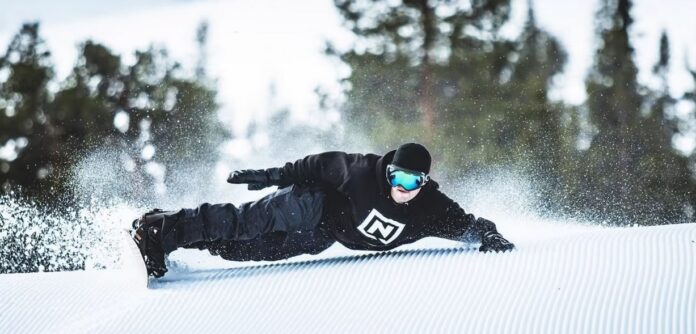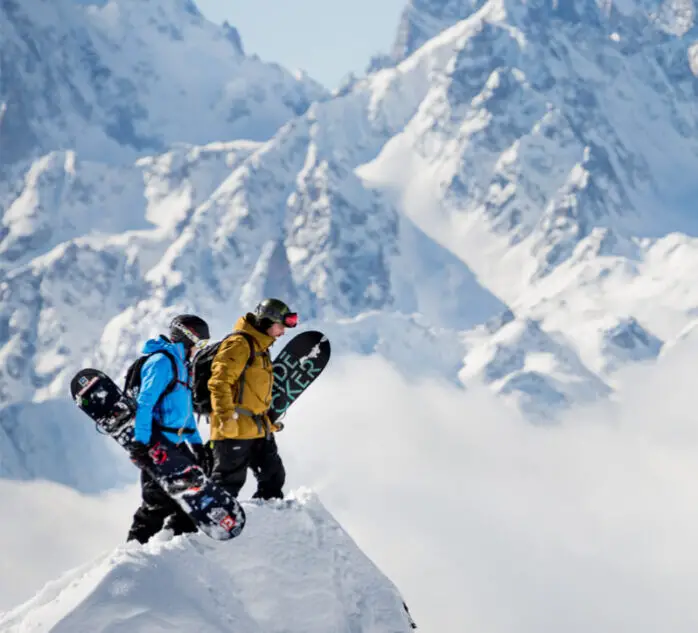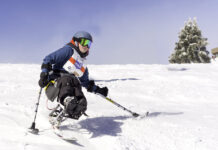
As you progress with your Snowboarding skills, you may find out that snow resorts no longer appeal to you unlike the first time you hit the slope. So what better way to rekindle your love for the sport than by taking a far challenging route than what your peers would normally take? Extreme Snowboarding gives you just that. It feeds your craving for the adrenaline rush that you wouldn’t encounter in your usual snow resort.
So what exactly sets Extreme Snowboarding apart from the other disciplines? The most apparent difference between the two is that there is an inherent risk of meeting an accident in the extreme one. The danger involved in this sport makes it exciting at the same time.
Nothing else can make your heart race and make you sweat bullets than going down a very steep slope, evading obstacles such as trees and facing unexpected turns. But you do not merely overcome the challenges set before you. In competitions, you must do that with grace, great amount of skill, control and confidence that will be more than enough to impress the judges.
Extreme Snowboarding Competitions

There are already numerous Extreme Snowboarding competitions around the world.
Examples of which are the World Extreme Snowboarding Championships in Alaska and the Marmot Extreme Skiing and Snowboarding Competition in New Zealand.
Competitions are divided into downhill and freestyle categories. In downhill events, contestants go 4000 feet downhill peppered with rollers, gullies and wind lips. Meanwhile, in freestyle events, a rider goes down 3000 feet of vertical run which involves natural half pipes, small cliffs, rolls, cornices and wind lips. The first event has two timed runs and one inspection run while the second has two judged runs and one inspection run.
Another typical aspect of Freestyle Snowboarding is the equipment used in this event. Riders use a wider and shorter Snowboard as compared with those normally used by other riders. It is then combined with a pair of soft-shelled boots which gives riders more flexibility. The combination of flexible materials in the board and the boots enable riders to make tight turns and other difficult maneuvers easily.
Extreme Snowboarding Safety

But all the fun in Extreme Snowboarding will be short-lived if you get broken bones, bruised muscles, or worse, get killed in the process. We therefore emphasize the importance of your safety whenever you go Snowboarding.
To ensure one’s safety during a competition, riders are required to wear safety equipment such as climbing harnesses, helmets, avalanche transceivers as well as other pieces of basic survival gear. Having them will minimize the risk factor that a rider faces when doing this very dangerous activity.
It also helps to learn how to read the weather, the terrain and the mountain. Knowledge of such is important so that you will know when to and not to go down the slope instead of letting stubbornness get the better of you.
However, having the right kind of safety equipment isn’t enough if you are not well-grounded on the basics of Snowboarding. If you think you haven’t gathered enough experience of the death-defying (literally and figuratively) stunts in Extreme Snowboarding, then you might as well check out our Snowboarding Beginner Course first. Make sure you have enough knowledge and preparation before trying this style. It also helps to ask more experienced riders for advice in terms of technique, their choice of equipment and safety in the slopes. They can give you invaluable information that you won’t find anywhere else.
So what are you waiting for? Take your Snowboarding experience to the next level and ride the virgin slopes. Have a great time doing Extreme Snowboarding! Just remember to keep your head and limbs intact!



















